I have repaired a few Commodore 64 computers recently for other people and finally decided to acquire one of my own. I figured it should be something somewhat unique if possible and this led me to this Australian Commodore 64 that I purchased from someone in the UK.
This is actually a regular bread-bin C64 inside with an aftermarket case to look a little like a C64C. The case was created by a company called “Micro Accessories”. This would have made a cheaper alternative to buying an entirely new C64 so that you can get the new styling.
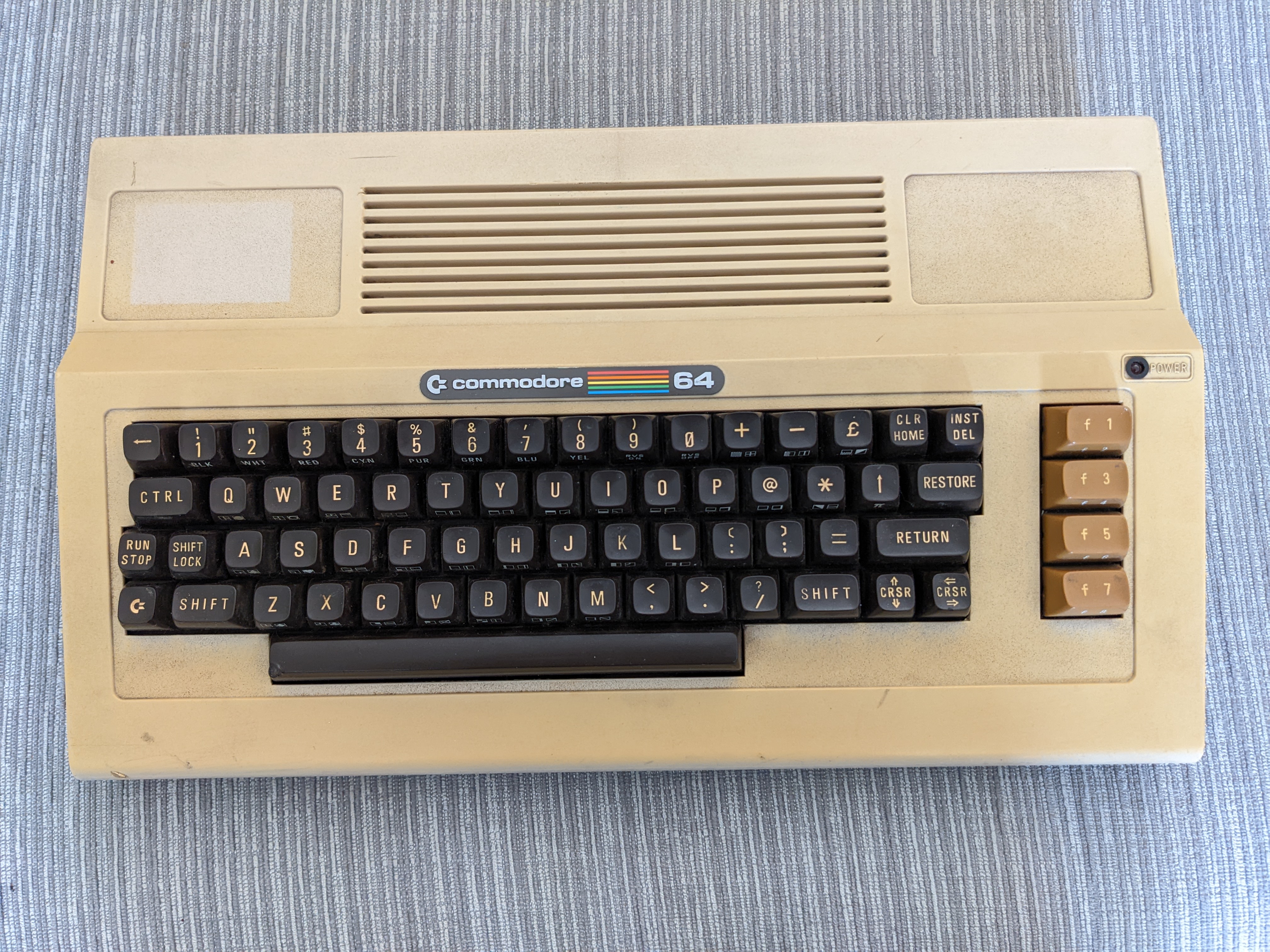
This example is not in a great condition and is in definite need of restoration, but you can see what it looked like.
Flipping the case over we can see the feet are not in great condition, I might find replacements for these. A couple of the screws are missing, one is even the incorrect one, but I believe these are easily obtainable. The biggest oddity is the big hole in the bottom. It was cut right through the case and shield in a near perfect rectangle. I cannot fathom why at this stage, I’m not quite sure what to do about it either, but that can be handled later. If anyone knows why a C64 user would have done this, please let me know.
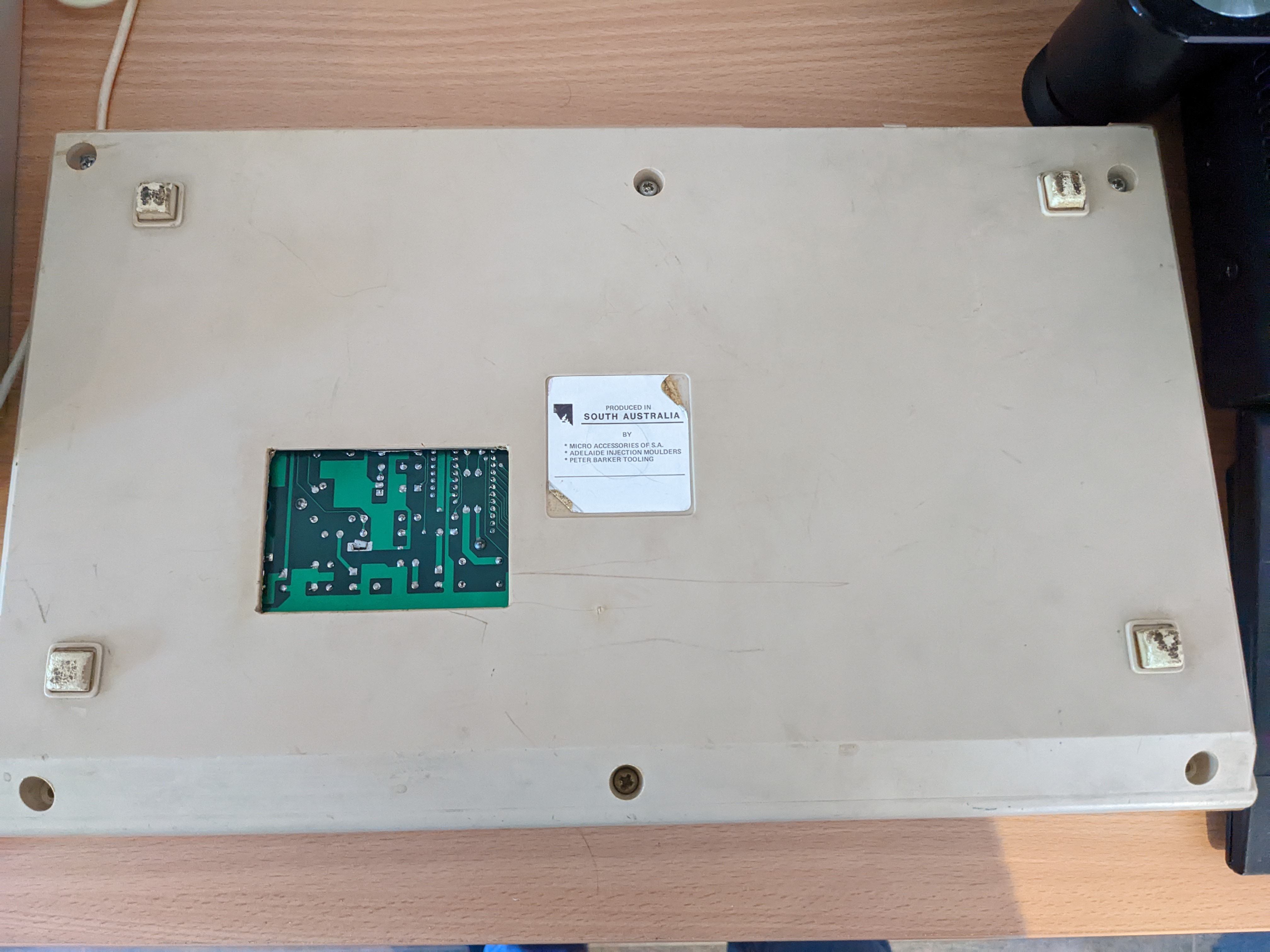
Removing the top section reveals this “lovely” metallic cardboard shielding which can be bent over to reveal the motherboard.

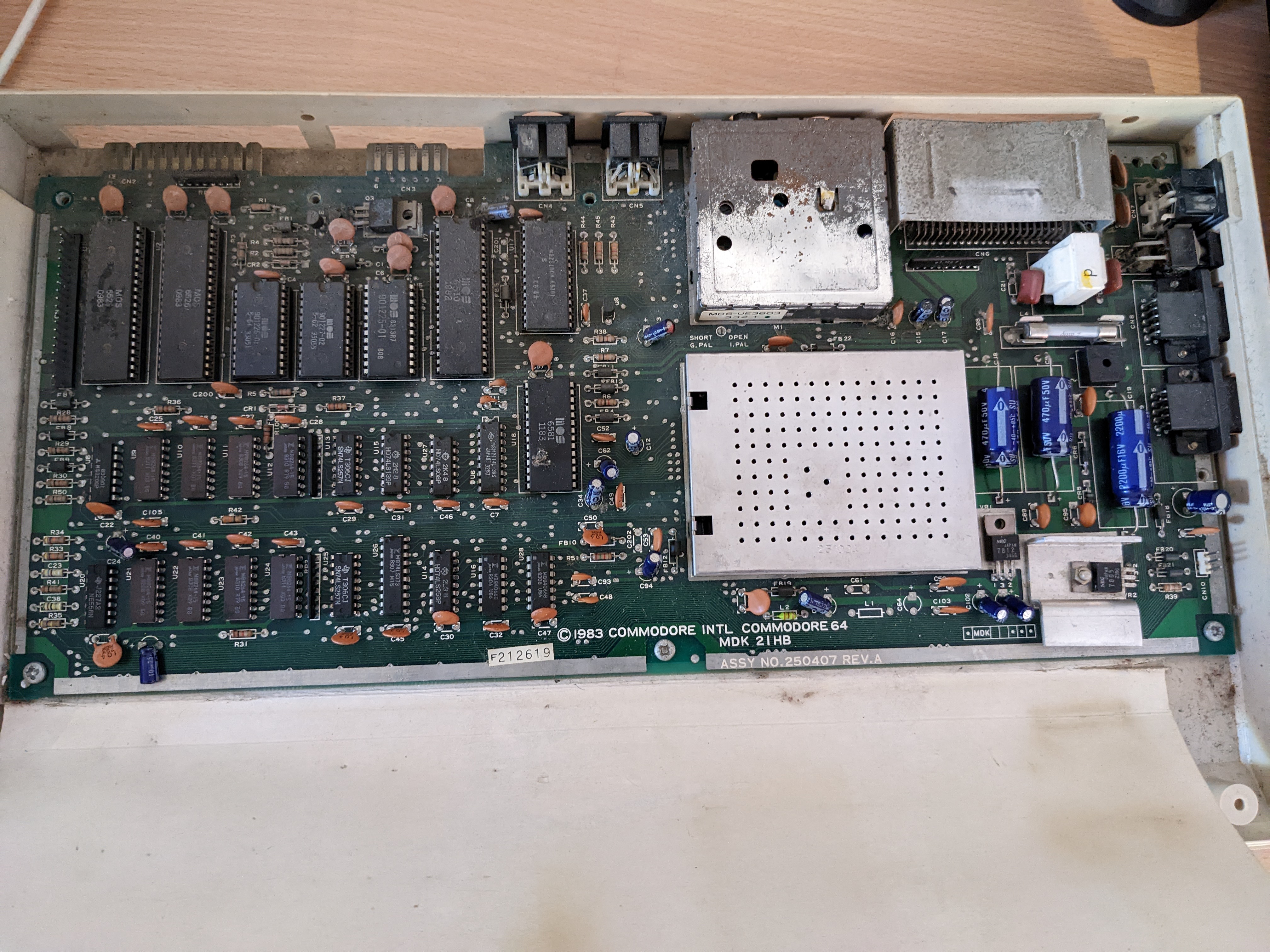
The motherboard is a 250407 which a common original bread-bin model of motherboard. I removed the motherboard, blew out some dust, cleaned it up a little and replaced the 5V regulator. The thermal paste on the regulator had aged quite a bit and I generally don’t trust the regulators on many 8bit machines, they can sometimes fail high causing damage to the chips. It is a cheap part to replace anyway.
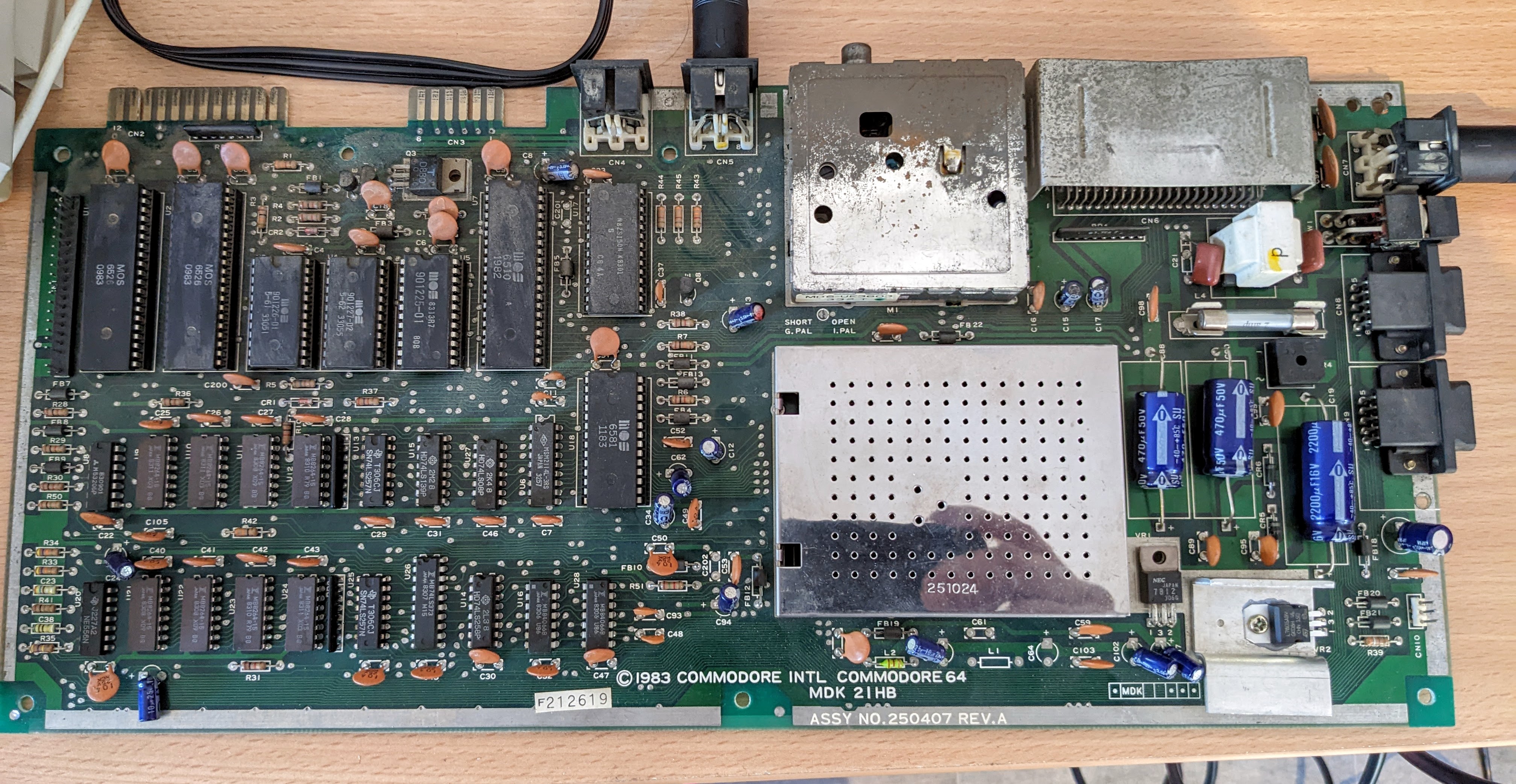
It could do with a bit more cleaning later, but it is better than it was. I did put the regulator screw in upside down, I’ll fix that later. Let’s switch this thing on…
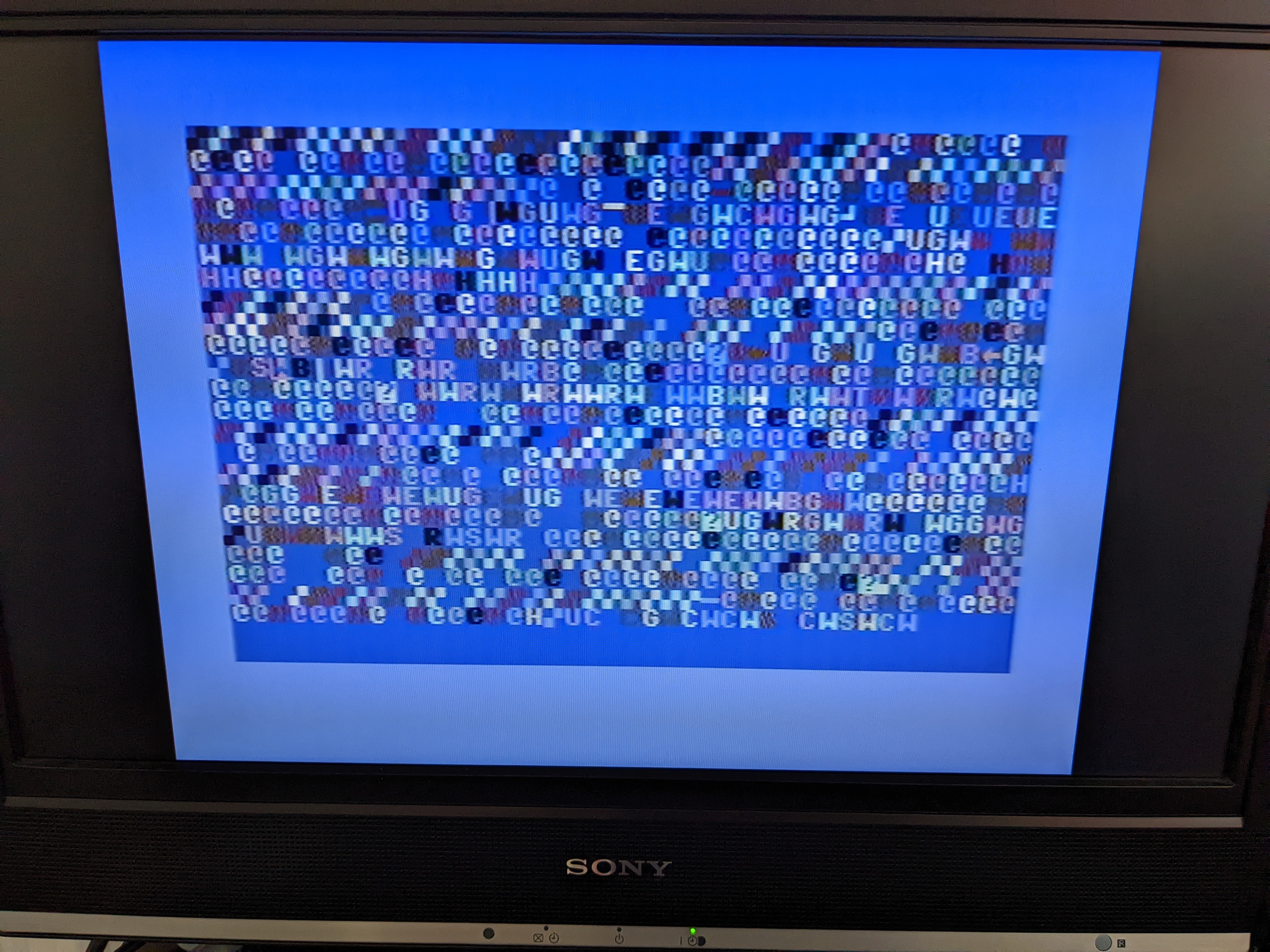
Well that’s not good. Looks like some diagnostics are in order. I gave it a quick check with the thermal camera in the hopes it would show a cooking chip, but no joy, the hot spots are around 40°C and my workshop was already in the high twenties so nothing was really getting hot.
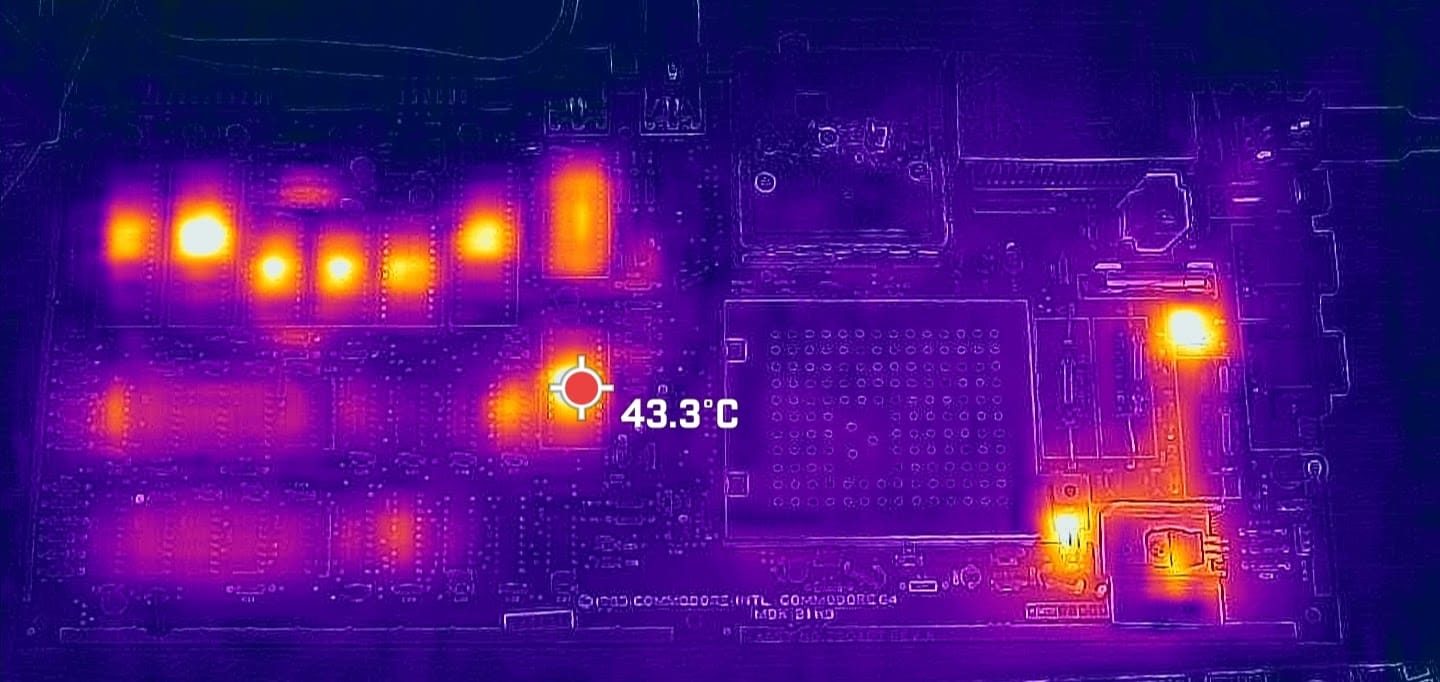
For now it will have to wait until I have a diagnostics cartridge to figure out what’s up. But it looks like this machine is going to take a little bit or work before it is ready to use.






Leave a comment